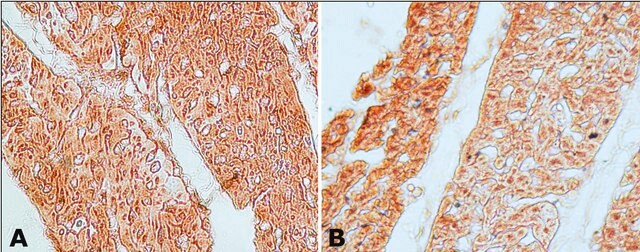07-2174
Anti-Heat Shock Protein 90α Antibody
from rabbit
Sinónimos:
heat shock protein 90kDa alpha (cytosolic), class A member 1, Renal carcinoma antigen NY-REN-38, heat shock 90kD protein 1, alpha, heat shock 90kD protein, alpha-like 4, heat shock 90kDa protein 1, alpha, heat shock protein HSP 90-alpha, Heat shock 86 kD
About This Item
Productos recomendados
origen biológico
rabbit
Nivel de calidad
tipo de anticuerpo
primary antibodies
clon
polyclonal
reactividad de especies
human, rat, mouse
reactividad de especies (predicha por homología)
canine (based on 100% sequence homology)
técnicas
immunocytochemistry: suitable
immunohistochemistry: suitable
immunoprecipitation (IP): suitable
western blot: suitable
Nº de acceso NCBI
Nº de acceso UniProt
Condiciones de envío
wet ice
modificación del objetivo postraduccional
unmodified
Información sobre el gen
dog ... Hsp90Aa1(480438)
human ... HSP90AA1(3320)
mouse ... Hsp90Aa1(15519)
rat ... Hsp90Aa1(299331)
Descripción general
Especificidad
Inmunógeno
Aplicación
Protein Trafficking
Chaperones
Immunohistochemistry Analysis: 1:100 dilution from a previous lot detected Heat Shock Protein 90α in human prostate adenocarcinoma tissue.
Immunocytochemistry Analysis: 1:500 dilution from a previous ot detected Heat Shock Protein 90α in A431 cells.
Immunoprecipitation Analysis: 10 µg from a previous lot immunoprecipitated Heat Shock Protein 90A from HeLa cell lysate.
Calidad
Western Blot Analysis: 0.0625 µg/mL of this antibody detected Heat Shock Protein 90α on 10 µg of HeLa cell lysate.
Descripción de destino
Forma física
Almacenamiento y estabilidad
Nota de análisis
HeLa cell lysate
Otras notas
Cláusula de descargo de responsabilidad
¿No encuentra el producto adecuado?
Pruebe nuestro Herramienta de selección de productos.
Código de clase de almacenamiento
12 - Non Combustible Liquids
Clase de riesgo para el agua (WGK)
WGK 1
Punto de inflamabilidad (°F)
Not applicable
Punto de inflamabilidad (°C)
Not applicable
Certificados de análisis (COA)
Busque Certificados de análisis (COA) introduciendo el número de lote del producto. Los números de lote se encuentran en la etiqueta del producto después de las palabras «Lot» o «Batch»
¿Ya tiene este producto?
Encuentre la documentación para los productos que ha comprado recientemente en la Biblioteca de documentos.
Nuestro equipo de científicos tiene experiencia en todas las áreas de investigación: Ciencias de la vida, Ciencia de los materiales, Síntesis química, Cromatografía, Analítica y muchas otras.
Póngase en contacto con el Servicio técnico